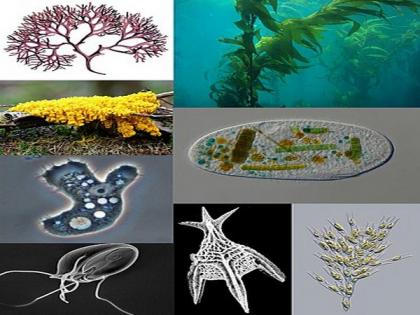Scientists unearth soil-dwelling microorgsms that resemble 'Pac-man'
By ANI | Updated: January 27, 2020 13:15 IST2020-01-25T16:12:01+5:302020-01-27T13:15:21+5:30
A group of scientists recently revealed in a study that the curious soil-dwelling microorgsms known as protists have an uncanny resemblance to the legendary 'Pac-man' arcade game character that gobbles up dots with its gaping mouth as it moves through a never-ending maze.

Scientists unearth soil-dwelling microorgsms that resemble 'Pac-man'
A group of scientists recently revealed in a study that the curious soil-dwelling microorgsms known as protists have an uncanny resemblance to the legendary 'Pac-man' arcade game character that gobbles up dots with its gaping mouth as it moves through a never-ending maze.
The first of its kind study that characterised protists in soils from around the world found that the most common groups of soil protists behave exactly like Pac-Man: moving through the soil matrix, devouring bacteria.
This study was co-authored by Smithsonian scientists and its results were published in the Science Advances journal.
"As part of a bigger project to understand all of the microbes in the soil we are characterizing bacteria and fungi, but also a lesser-known, but equally important group called protists," said Angela Oliverio, a former intern at the Smithsonian Tropical Research Institute (STRI) and lead author of the paper.
Protists reproduce quickly and are probably much more responsive to climate change than larger forms of life.
Like the cartoon character Sheldon Plankton in Spongebob Squarepants, protists are not plants, mals or fungi. They are single-celled orgsms but, unlike bacteria, they have a nucleus.
They move through the water using whip-like flagellae and tiny hairs called cilia. Some of the nastier protists cause sleeping sickness, malaria and red tide, but nearly all play important, if mysterious, roles in the energy- and nutrient-trading relationships that connect ecosystems.
Identifying millions of minuscule protists in soil used to be impossible, but recently-developed technology to classify protists based on their genetic code makes it possible to characterize them on a large scale.
The team sequenced the 18S ribosomal RNA studied from soil samples from across six continents to better understand the ecological roles of the protists in the below-ground ecosystem.
They discovered that most of the protists are the Pac-Man type that consumes other, smaller orgsms. But in tropical soils, a larger number of protists were parasites, living inside other orgsms.
In desert soils, there were more protists capable of photosynthesizing and using sunlight directly as an energy source.
The best predictor of what types of protists exist in a sample is the annual rainfall at the site. This may seem intuitive because protists depend on water to move, but it was a surprise, since soil acidity, rather than precipitation, is what usually predicts which bacteria and fungi are in the soil.
"Soils are home to an astonishing diversity of orgsms, the lives of which we are only beginning to understand," said Ben Turner, STRI staff scientist and co-author of the study. "Soil protists are an understudied group, so this work provides a foundation for future research on their ecology in ecosystems worldwide."
( With inputs from ANI )
Open in app